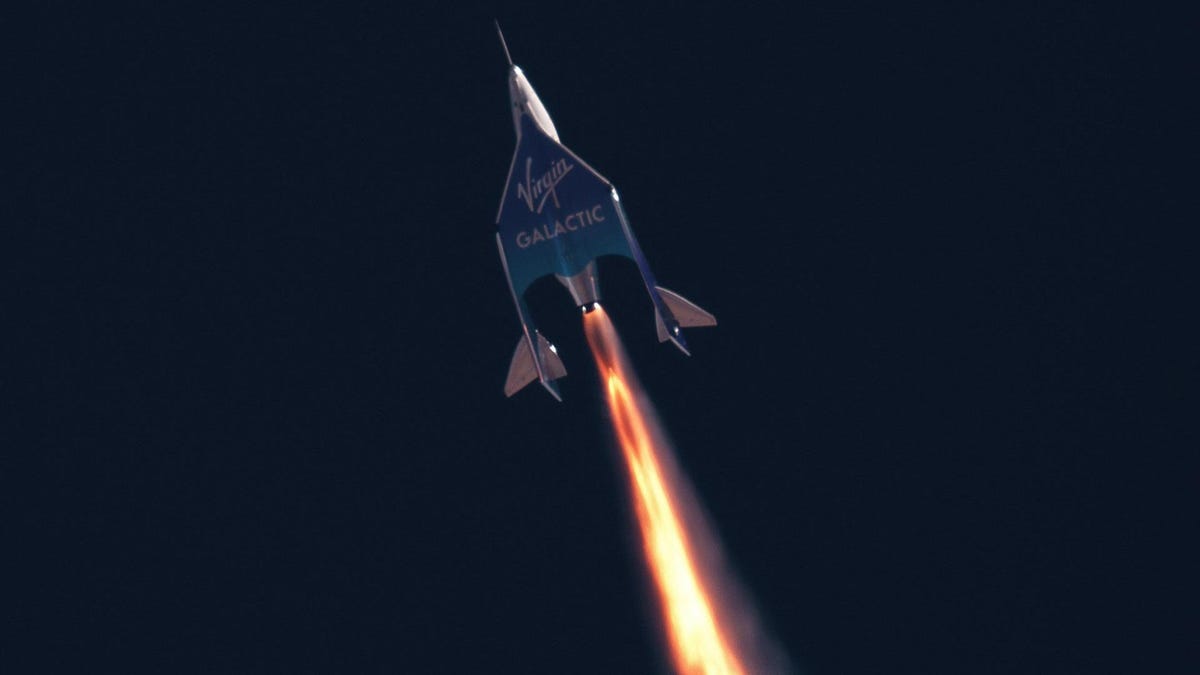
A crew of researchers is preparing to conduct experiments approximately 50 miles (80.5 kilometers) above the Earth’s surface while on board Virgin Galactic’s spaceplane.
Last week, Richard Branson’s space tourism company announced that its upcoming mission, Galactic 05, is scheduled for a launch window that opens on November 2. The mission will fly planetary scientist Alan Stern and science communicator and bioastronautics researcher Kellie Gerardi, plus a mystery third passenger who’s been identified as a private astronaut of Franco-Italian nationality.
Advertisement
Stern, the principal investigator of NASA’s New Horizons mission to Pluto, will be training for a future suborbital spaceflight as part of the the space agency’s Flight Opportunities program. During his time on board Virgin Galactic’s VSS Unity spaceplane, Stern will wear a biomedical harness to assess researchers’ reactions to high G-forces and the microgravity environment. Stern will also operate a wide-field visible and ultraviolet camera to test it during suborbital flights.
Advertisement
Stern has long advocated for using suborbital flights such as this one as a more accessible way to conduct experiments. “After years of sending machines to conduct research on my behalf, I’m thrilled to be making this maiden spaceflight,” he said in a statement. “What sets this flight apart from others, and which likely represents a new kind of space activity, is that more than anything else I will be training—in space—for future space experiments I will be performing with NASA funding.”
Advertisement
“Virgin’s suborbital costs are low enough to open up space training actually in space as a viable opportunity, and that is a game changer,” he added.
On behalf of the International Institute for Astronautical Sciences (IIAS), Gerardi will fly three human-tended payloads. The first will examine how fluids behave in low gravity to inform new technologies, while a second device will collect biometric data throughout the launch, re-entry, and landing portions of the flight, as well as a sensor to measure blood glucose levels during the flight to investigate whether long duration spaceflight induces insulin resistance (a pre-diabetogenic stage).
Advertisement
“This mission represents the beginning of a new era of access to space for the research community, and the culmination of a personal lifelong dream,” Gerardi said in a statement. “I’m grateful for the support and confidence that IIAS continues to place in me, and I’m looking forward to paving the way for our many talented researchers who will follow, using space as a laboratory to benefit humanity.”
The flight will last for about 90 minutes. During that time, the VMS Eve carrier aircraft will take off while carrying the Unity spaceplane beneath its wings before releasing it at an altitude of 44,500 feet (13,500 meters) above the ground. Once it is released, the spaceplane will fire up its rocket engines, lifting off to a maximum altitude of 54.2 miles (87 kilometers), which is a few miles shy of the internationally recognized boundary of space known as the Kármán Line.
Advertisement
Galactic 05 is the company’s second research mission since Virgin Galactic launched its commercial spaceflight program this summer. Its first mission, Galactic 01, involved a three-person crew from the Italian Air Force and the National Research Council of Italy, who carried out microgravity research on board Virgin Galactic’s VSS Unity spaceplane.
This will be the last trip for Virgin Galactic’s spaceplane this year, with plans to launch Galactic 06 in January 2024.
Advertisement
For more spaceflight in your life, follow us on X (formerly Twitter) and bookmark Gizmodo’s dedicated Spaceflight page.
Services Marketplace – Listings, Bookings & Reviews